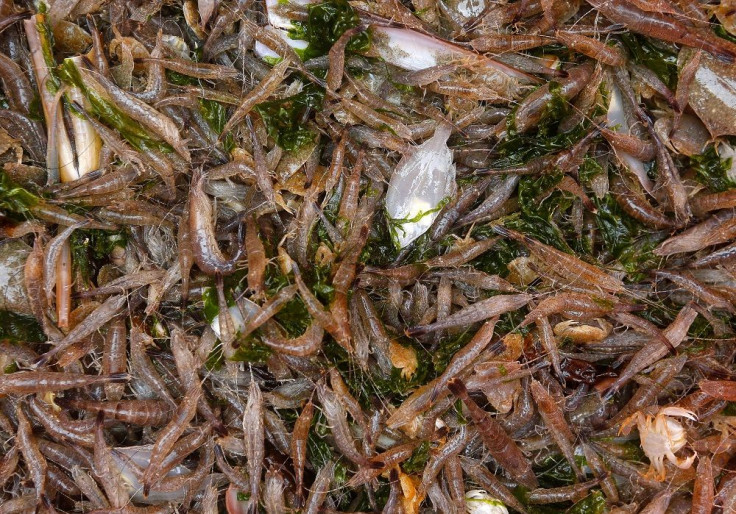National Oceanography Center discovers shrimp species that strip carcasses to the bones

A study on how human bodies are broken down in water led to the discovery by England’s National Oceanography Centre of a new species of shrimp that could strip carcasses clean. The amphipods are only 3 millimetres long and search the oceans in swarms for dead bodies.
In the study led by Tammy Horton, researchers dropped two pigs in the ocean in February 2012 and filmed the experiment. One was inside a cage as protection against sharks. The other was in the open water and was devoured expectedly by sharks, reports Facts Coexist.
However, the caged pig also did not remain untouched. The amphipods entered the swine’s orifices and ate it from the inside. The number of amphipods that were attracted to the caged pig was so large that it covered the cage and bars and stopped other arthropods from attacking the animal.
Although the shrimp-like creatures normally eat fellow marine life, it nevertheless ate meat, showing their scavenger skills to dine on anything it could. The researchers noticed that since the shrimps operate at 4,500 metres or 2.8 miles below the surface, carcasses must reach that depth to be eaten by the amphipods.
To study the new carnivorous species that Horton classified and named lemarete, the researchers lowered a trap with a mackerel inside into that depth of water and hauled it up with 40,000 amphipods inside. It was named in honour of Roger Bamber, a great taxonomist who died in February 2015.
In a news release, Horton explains, “I gave the species name ‘lemarete’ to one of the amphipods because it translates from Greed to ‘Bold and Excellent’, which is the motto on Roger Bamber’s coat of arms. I chose this name because it is an accurate description of Roger, as well as being a little cryptic.”
She adds that “Roger always put a lot of thought into the names he gave species, such as the tanaid species he named after a many-legged creature in Terry Practchett’s Discworld.” The other species discovered in the same study, published in the August issue of Zoo Taxa, was named Haptocallisoma which means grasping in Greek. That species could cling to whatever it is eating, reports Alphagalileo.
Contact the writer at feedback@ibtimes.com.au




















